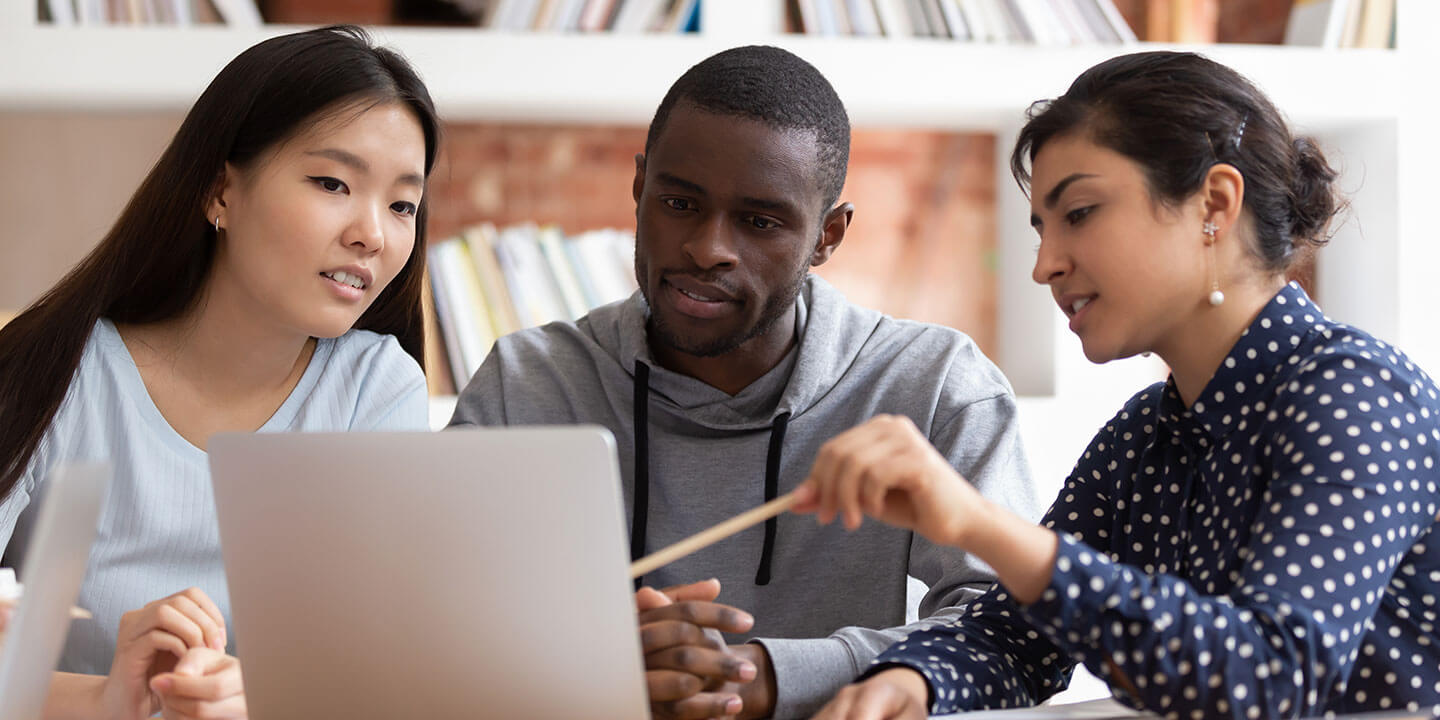In higher education, students have needs and aspirations based on the diversity of their lived experiences, and they bring their rich social and cultural backgrounds with them when they learn. To serve all students, educators need to widen their teaching methodologies and perspectives to serve varied characteristics and preferences1. They also need to consider factors such as age, learning styles, strengths, improvement areas, and more to develop inclusive and active learning strategies in their classrooms.
The ‘7 Pillars of Inclusivity’ can help educators incorporate inclusive practices that value diversity and embed equity in the classroom.
What Are the 7 Pillars of Inclusivity?
To create an inclusive classroom, educators must keep their students at the center of learning and provide an environment that enriches their learning outcomes.2 Educators can follow seven strategies to welcome all students into an inclusive classroom experience.
1. Access
An accessible learning environment is one where students don’t experience any barriers to education. It’s vital that educators ensure accessibility for students with special needs, learning disabilities, and neurodivergence, and for students who come from diverse language, economic, and cultural backgrounds. If implemented well, a focus on equitable access will set up all students for successful learning outcomes.
Educators can create an accessible and accepting classroom by incorporating the following practices
- Design an inclusive and high-quality curriculum targeted towards positive learning outcomes.
- Provide accessible educational materials and software that meet the learning needs of students with physical and/or cognitive challenges so as to help them learn their best and feel a sense of belonging.
- Make sure learning materials are representative of and relevant to all students so that those whose first language isn’t English or who come from under-resourced communities will see themselves in what they’re learning and feel like they belong.
- Support all students by forming collaborative groups for projects when possible.
- Build relationships with students so you understand them and learn how to differentiate instruction to meet their learning needs whenever possible.
- Adopt active learning strategies that motivate students to take initiative.3 A healthy mix of reflective, movement, or discussion-based lessons and projects can be targeted toward achieving behavioral and cognitive objectives.
- Providing scholarships for deserving students.
- Being more approachable and responsive to students’ queries.
2. Mindset
Making the classroom inclusive requires a growth mindset, which encourages an openness to understanding the diversity of students’ lived experiences. Implicit biases can pollute a growth mindset and cause educators to lower their expectations of students who require specific support to be successful.
According to the American Psychological Association, an implicit bias is a negative attitude toward a specific group of people of which one is not consciously aware.4 Implicit biases can include prejudices toward learners who come from low income homes, have unique cultural backgrounds, or are differently abled learners.
Educators can maintain a growth mindset by identifying their implicit biases, resolving them, and focusing on setting high expectations for all students.
Identifying implicit biases
Practicing self-reflective techniques or collecting responses/feedback from students and colleagues can be great ways for educators to identify their implicit biases.5
- Self-reflection and assessment involves focusing on teaching and assessing methodologies and recognizing how those are influenced by underlying social, economic, or cultural prejudices. Educators can keep a record of their teaching methodologies, experiences, and growth through personal journals and go back to see if they have changed past behaviors or not.
- Seeking responses through observation sheets filled out by students or peer reviews from trusting colleagues can provide educators with honest opinions about their behavior toward inclusion, diversity, and equity in the classroom.
Both these techniques can help educators identify areas of their teaching, curriculum, coursework, and assessing styles that are not inclusive or engaging and implement improvements.
Creating a positive and collaborative campus culture
A positive attitude6 that’s grounded in a growth mindset positions educators to express the values of diversity, equity, and inclusion in their words, actions, and classroom practices. Students who feel seen, heard, and welcome are more likely to succeed in class.
On a larger scale, institutions can support diversity by promoting a positive and collaborative campus culture with events that create opportunities for all students to connect and explore differences and commonalities with each other. Educators should encourage students to attend these events and be a part of the inclusive learning community.
3. Student Choice
Choosing to express themselves can help students be more involved in the learning process. Educators can give students a chance to voice their opinions through in-person conversations where they share feedback about the coursework, projects, and teaching style. By being more approachable and attentive, educators can better understand their students’ challenges and devise curriculums or solutions that enable strong performance and active learning.
4. Partnerships
Educators can promote partnerships in the classroom and school to instill inclusive learning structures and pedagogies. These can include:
- Collaborative initiatives or group projects where students are not grouped per their perceived ability levels.7 This encourages students to engage with each other, exchange thoughts and ideas, value group members’ diverse perspectives, and work to achieve common goals instead of feeling left out or experiencing the stigma of being in a low-performing group.8
- Guest speaker events where the institution/educator expands classroom or campus diversity by inviting guest speakers to share stories that are new and different. These stories can inspire students to enlarge their worldview.
- Collaborations with other educators to provide a more enriched learning environment.
5. Explicit Communication
At the start of a course, educators can establish rules related to their coursework and class culture to set expectations for performance and collaborative behavior. They can encourage healthy communication practices by first being available to speak to all students and then organizing events or collaborative projects to ensure students learn to listen to and understand each other.
Engaging with students through in-person or email conversations can help monitor their academic development and struggles. Educators can connect with students to discuss their progress or performance and highlight achievements and areas of improvement.
6. Policy
Higher education institutions can advance inclusivity, diversity, and equity by establishing policies focused on supporting students based on their specific needs. For example, while affordability is important to all students, it is especially important to those without personal or family wealth. A policy of providing grants and scholarships to students with real financial need can be the difference between those students being able to enroll and learn and them not being able engage in higher education at all. A culture of equity depends on policies that consider real-world needs and ensure that inequitable barriers don’t prevent students from being part of the community.
7.Opportunities
Higher education institutions and educators need to ensure that all students have an opportunity to access and complete their education. Diverse classrooms adopt strategies that motivate, support, and enhance students’ strengths and academic performance.
Educators can support their students’ talents and potential by considering the various needs of their diverse student body and designing assessments and grading systems that are inclusive of and accessible by everyone. This can give all students the opportunity to succeed in their education.
In an inclusive higher education environment, educators model a positive growth mindset and provide opportunities for students to collaborate with and learn from one another. This is the key for supporting the success of all students, no matter their lived experiences.
References
- Diane Casale-Giannola and Linda Schwartz Green, 41 Active Learning Strategies for the Inclusive Classroom Grades 6–12 (USA: Corwin, 2012), 4.
- Diane Casale-Giannola and Linda Schwartz Green, 41 Active Learning Strategies for the Inclusive Classroom Grades 6–12 (USA: Corwin, 2012), 6.
- Diane Casale-Giannola and Linda Schwartz Green, 41 Active Learning Strategies for the Inclusive Classroom Grades 6–12 (USA: Corwin, 2012), 6.
- “Inclusive Teaching Strategies”, Yale Poorvu Center for Teaching and Learning, accessed May 12, 2023, https://poorvucenter.yale.edu/InclusiveTeachingStrategies.
- “Implicit Bias”, American Psychology Association, accessed May 12, 2023, https://www.apa.org/topics/implicit-bias.
- Tim Loreman, “Seven pillars of support for inclusive education: Moving from “Why?” to “How?”. International Journal of Whole Schooling Vol. 3, No. 2, (2007): 24.
- Tim Loreman, “Seven pillars of support for inclusive education: Moving from “Why?” to “How?”. International Journal of Whole Schooling Vol. 3, No. 2, (2007): 29.
- Tim Loreman, “Seven pillars of support for inclusive education: Moving from “Why?” to “How?”. International Journal of Whole Schooling Vol. 3, No. 2, (2007): 29.


